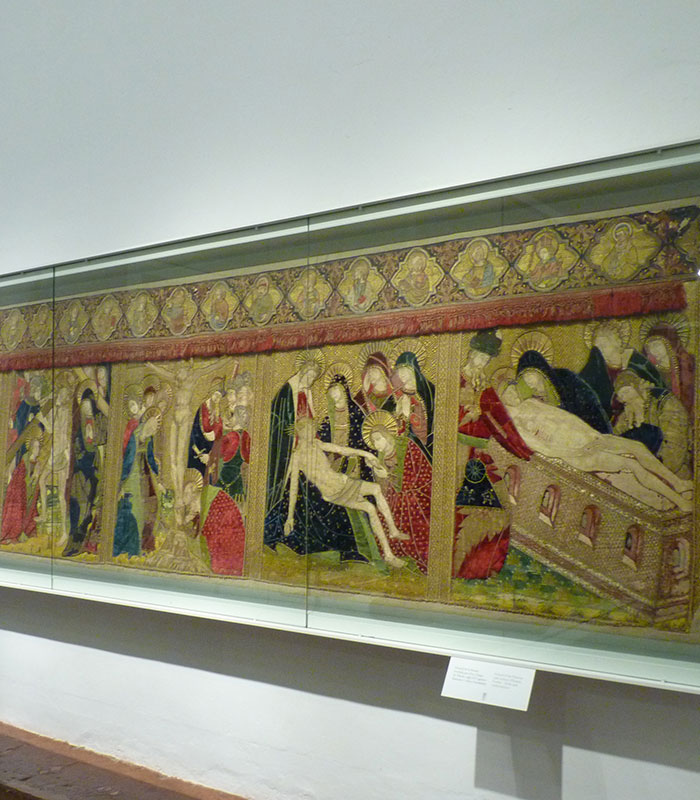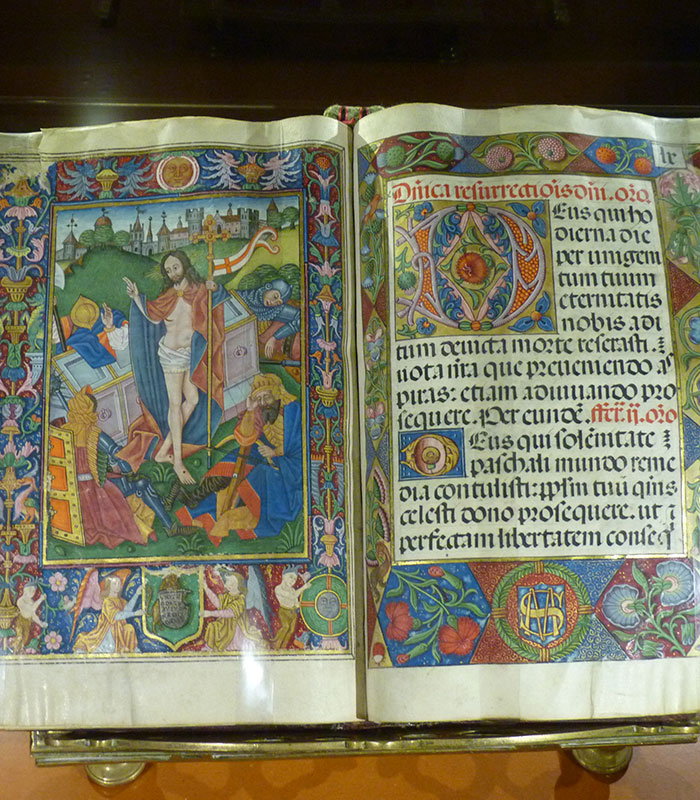For centuries the Marian devotion of which Guadalupe was the centre of attraction, together with the importance given to it by noblemen and kings, meant that between the walls of the Real Monasterio a huge heritage of works of art gradually accumulated. The museums of Guadalupe exhibit this impressive legacy and convert the site into a first-rate cultural centre, allowing it to be enjoyed by the visitors to the Villuercas-Ibores-Jara Global Geopark of the UNESCO.
The singularity of the museums of Guadalupe not only lies in the number of valuable elements they contain but also in the architectural context and the buildings in which they are located. Such is the case of the Embroidery Museum which was inaugurated in 1928 in the former monks’ refectory. The room has undergone few modifications to its original appearance. It contains many handmade pieces of work produced in the monastery’s workshop since the early 15th century. Religious costumes, ceremonial apparel, liturgical elements and those of the services of the monastery, hoods, headdresses, capes, robes… made from rich materials with great care by the best artisans of the period.
The Painting and Sculpture Museum is in the Mudejar cloister, to be precise in the former confectionary. Here we can find exceptional works by artists such as Goya (Confession in Prison), El Greco (The Coronation of Our Lady, St Peter, and St Andrew), Juan de Flandes, and Zurbarán, among others. This museum also contains carvings such as those of Hanequin of Brussels and Egas Cueman, and a Christ on the Cross of marble attributed to Michelangelo.

